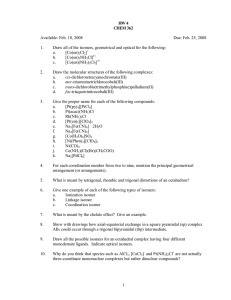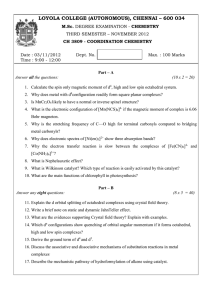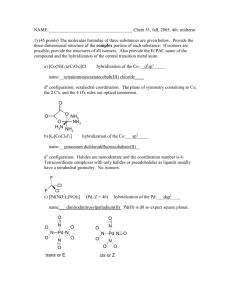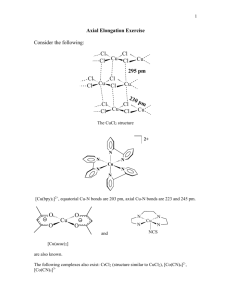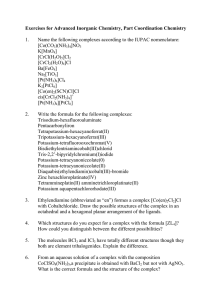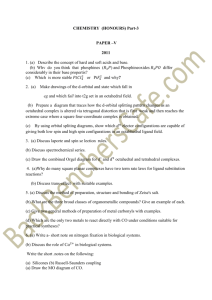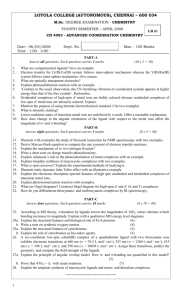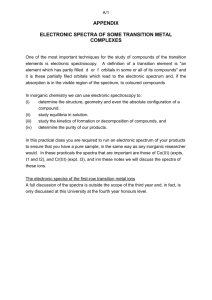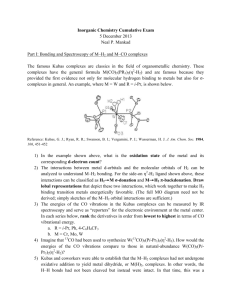ICH602S Assignment1 Worksheet
advertisement
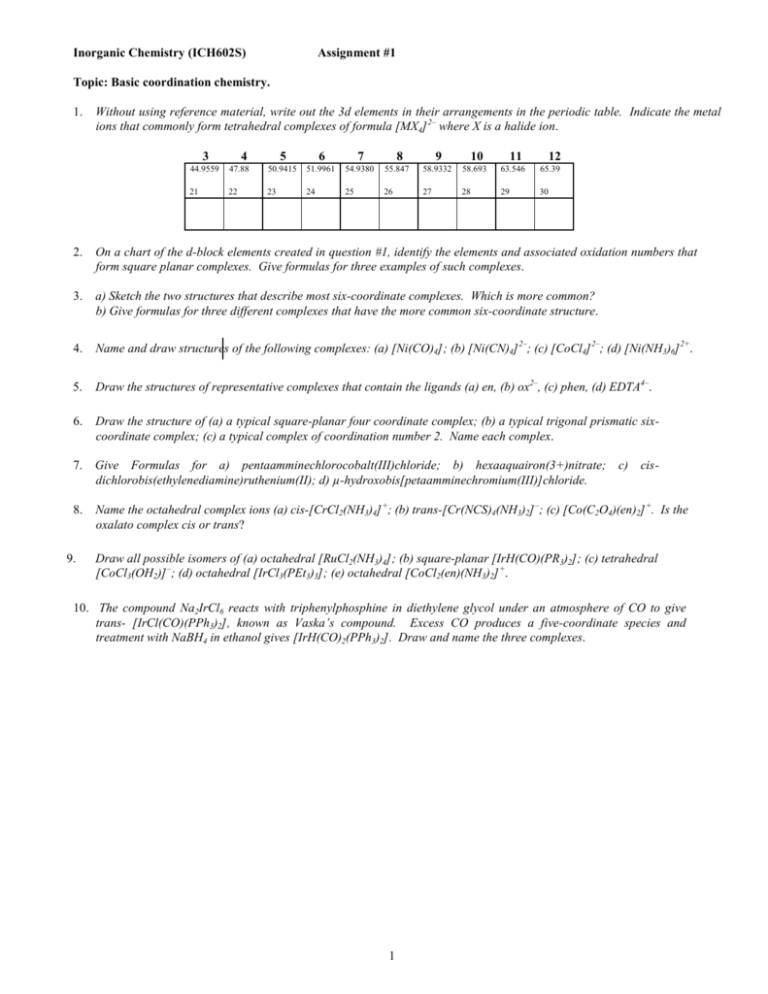
Inorganic Chemistry (ICH602S) Assignment #1 Topic: Basic coordination chemistry. 1. Without using reference material, write out the 3d elements in their arrangements in the periodic table. Indicate the metal ions that commonly form tetrahedral complexes of formula [MX4] 2– where X is a halide ion. 5 6 7 9 10 44.9559 3 47.88 4 50.9415 51.9961 54.9380 55.847 8 58.9332 58.693 63.546 11 65.39 12 21 22 23 24 25 26 27 28 29 30 2. On a chart of the d-block elements created in question #1, identify the elements and associated oxidation numbers that form square planar complexes. Give formulas for three examples of such complexes. 3. a) Sketch the two structures that describe most six-coordinate complexes. Which is more common? b) Give formulas for three different complexes that have the more common six-coordinate structure. 4. Name and draw structures of the following complexes: (a) [Ni(CO)4]; (b) [Ni(CN)4] 2–; (c) [CoCl4] 2–; (d) [Ni(NH3)6] 2+. 5. Draw the structures of representative complexes that contain the ligands (a) en, (b) ox2–, (c) phen, (d) EDTA4–. 6. Draw the structure of (a) a typical square-planar four coordinate complex; (b) a typical trigonal prismatic sixcoordinate complex; (c) a typical complex of coordination number 2. Name each complex. 7. Give Formulas for a) pentaamminechlorocobalt(III)chloride; b) hexaaquairon(3+)nitrate; c) cisdichlorobis(ethylenediamine)ruthenium(II); d) µ-hydroxobis[petaamminechromium(III)]chloride. 8. 9. Name the octahedral complex ions (a) cis-[CrCl2(NH3)4] +; (b) trans-[Cr(NCS)4(NH3)2] –; (c) [Co(C2O4)(en)2] +. Is the oxalato complex cis or trans? Draw all possible isomers of (a) octahedral [RuCl2(NH3)4]; (b) square-planar [IrH(CO)(PR3)2]; (c) tetrahedral [CoCl3(OH2)] –; (d) octahedral [IrCl3(PEt3)3]; (e) octahedral [CoCl2(en)(NH3)2] +. 10. The compound Na2IrCl6 reacts with triphenylphosphine in diethylene glycol under an atmosphere of CO to give trans- [IrCl(CO)(PPh3)2], known as Vaska’s compound. Excess CO produces a five-coordinate species and treatment with NaBH4 in ethanol gives [IrH(CO)2(PPh3)2]. Draw and name the three complexes. 1


